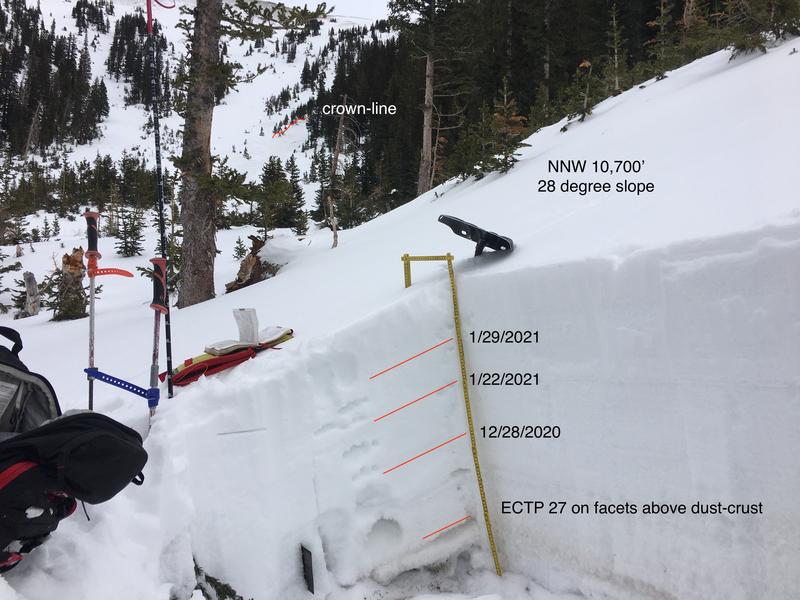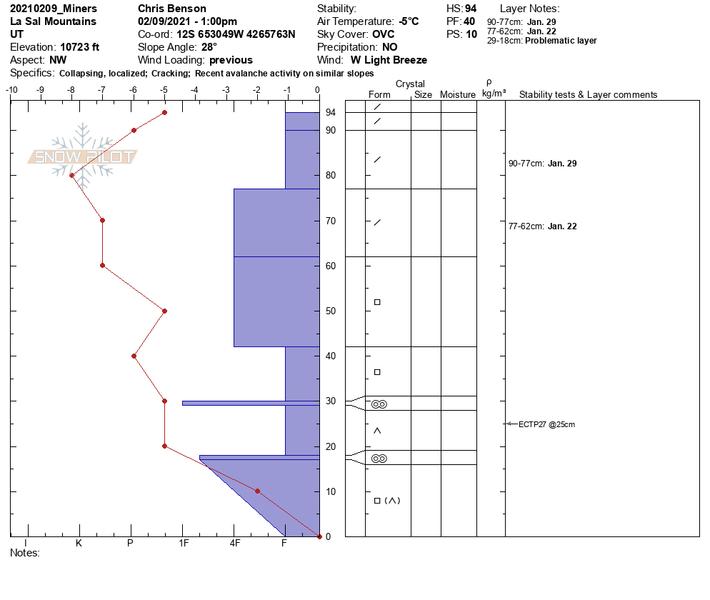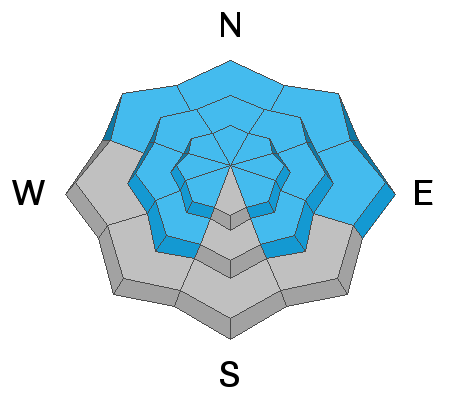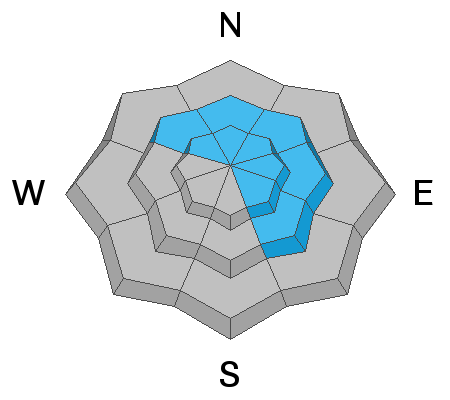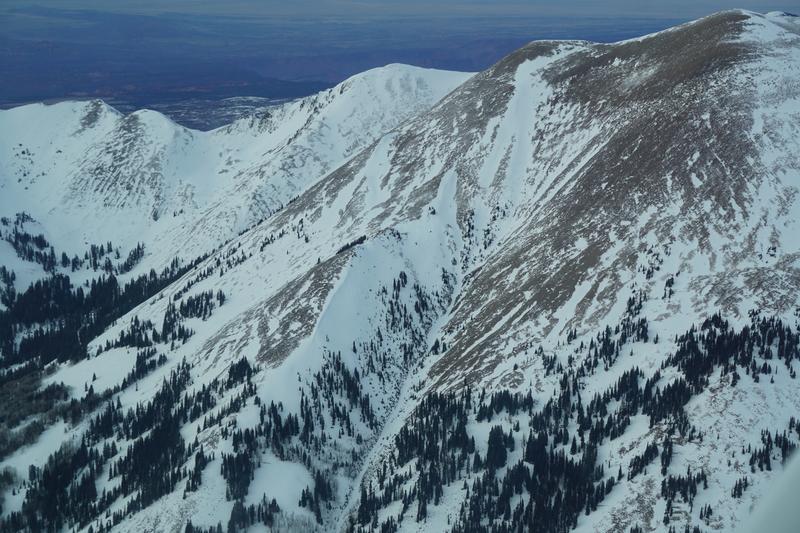We are filled with grief to report four fatalities from a skier triggered avalanche in the Wasatch Mountains on Saturday. All were well known members of the backcountry community. Here is the
preliminary report. Additionally, yet another avalanche fatality has occurred in WA;
preliminary report. In a little over a week, there have been 16 avalanche fatalities across the U.S. Conditions are dangerous in most regions and ours is no exception. Please stay conservative in your terrain choices.
The Geyser Pass Road is plowed. Conditions are snow-packed and icy and all-wheel drive is recommended.
The Lower Utah Nordic Alliance (LUNA) is planning on grooming today.
24 Hour Snow 1" 72 Hour Snow 1" Base Depth in Gold Basin 39" Wind SW 2 mph Temp 22 F
Over the last 24 hours, about 1" of snow has fallen with light SW winds. Today, expect lingering snow showers, partly cloudy skies followed by clearing this afternoon with highs near 35 F and light westerly winds. Models suggest a series of systems beginning to impact the area starting Friday. Stay tuned.
Snowpack Discussion
We received about 1" of snow and might get a few more today, but this won't change the avalanche danger. Wind and warm temperatures have created variable conditions but settled powder can still be found below treeline on sheltered northerly aspects. On sunny slopes, the snow surface has crusted over, and coverage remains thin. Many slopes on almost every aspect have a weak snowpack structure. Yesterday, on a SW aspect at 9,600', I observed a soft slab overlying weak facets that produced several failures under moderate-loading steps with sudden-collapse fracture character. While breaking trail in open meadows, I got two collapses and one shooting crack.
The most dangerous areas are near and above treeline on NW-E-SE aspects. I investigated a relatively recent avalanche on a NNW aspect in Miners Basin. The pattern we are seeing throughout the range is that stubborn slabs continue to fail on weak layers buried deep in the snowpack. These slabs have the potential to propagate far and wide. This is especially true in areas that have been wind loaded. These slabs are growing more stubborn, BUT, don't be fooled by the absence of cracking and collapsing. Although these warning signs are becoming less frequent, the underlying poor-snowpack structure may still produce large and destructive avalanches.



